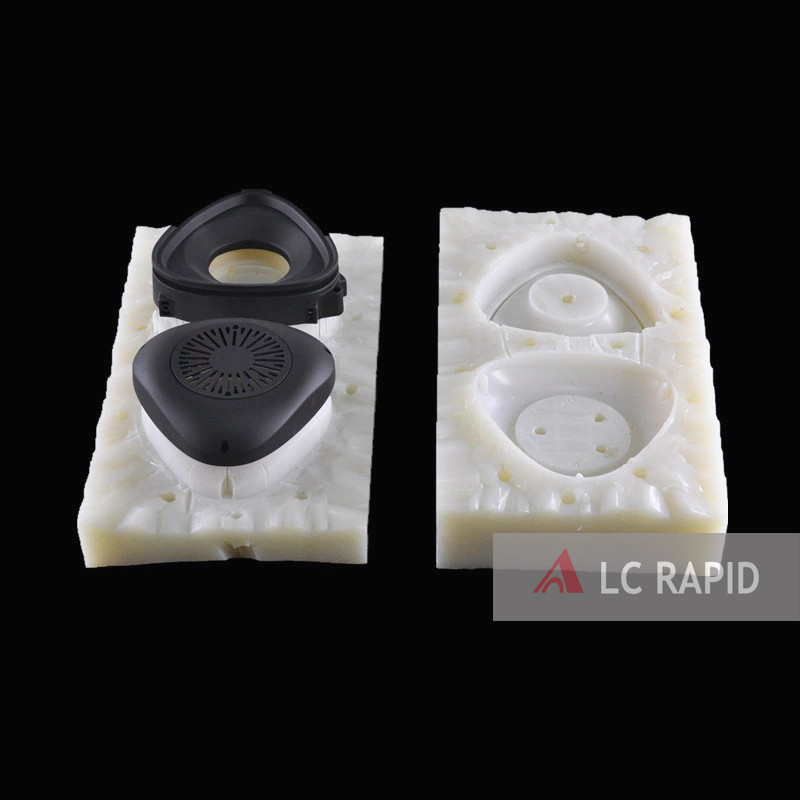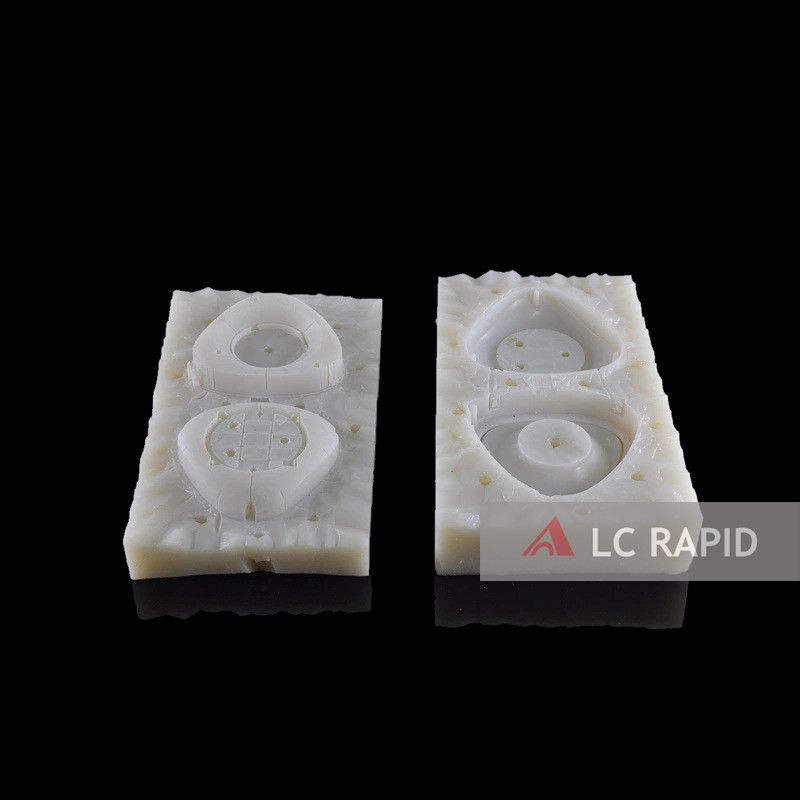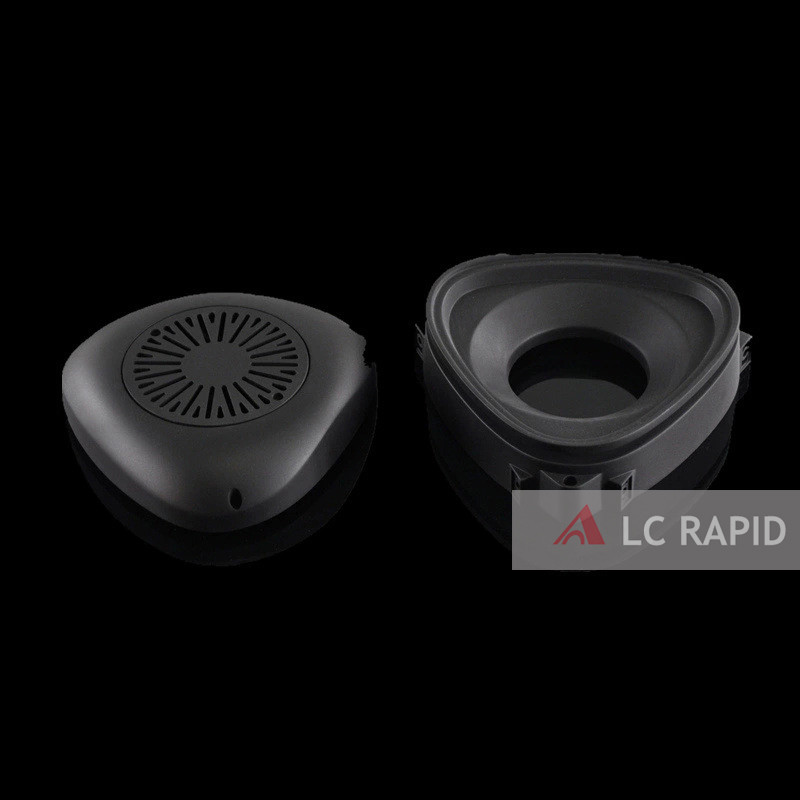The Working Principle of Vacuum Casting and Its Advantages of the Three Types
(2022年11月18日)Vacuum mould casting is a process that uses vented molds. The molten metal flows into the mold by air pressure, and then the air is purged to form a vacuum. This vacuum permanent mold casting method is mainly used for small parts or jewelry with delicate details.
1. The working principle of vacuum casting
Using vacuum casting applications is a physical modeling method that combines vacuum technology with sand mold casting, and seals the cavity surface and back of the sand mold with plastic film, generating the negative pressure with the help of vacuum pump, and the pressure difference between the inside and outside of the sand mold is caused to tighten the molding sand. Besides,the mold sand will then collapse to obtain the casting after placing the sand core, closing the mold, casting, waiting for the casting to solidify, releasing the negative pressure or stopping the air extraction.
vacuum-casting-1.jpg
2. The advantages of the three types of vacuum casting
Vacuum casting can be roughly divided into three types: vacuum suction casting, vacuum low pressure casting, and vacuum differential pressure casting:
Vacuum suction mould casting
Placing the casting mold in a closed container, and drawing out the air in the casting mold to cause a certain negative pressure in the casting mold, which will lead to the molten metal to be sucked into the mold cavity. When the ingate of the casting is solidified, removing the negative pressure, so that the unsolidified molten metal in the down gate flows back into the molten pool. The advantages are as follows:
(1) Vacuum suction casting is conducive to the elimination of gas in the mold, suppresses the generation of turbulence and air entrainment, also overcomes the disadvantages of low-pressure casting and differential pressure casting, so that improving significantly the filling capacity of molten metal.
(2) Due to the improvement of filling capacity during vacuum suction casting, the casting temperature of molten metal can be 20~30℃ lower than that of gravity casting.
(3) The castings with large wall thickness differences, thin walls and high quality requirements can be cast.
(4) A smooth filling effect can be obtained by selecting a suitable vacuum degree change rate and controlling the speed of molten metal entering the cavity.
vacuum-casting-2.jpg
Vacuum low pressure mould casting
The vacuum low-pressure casting method is to vacuum the mold during the vacuum casting process of pressurizing and filling, after the filling is completed, the pressure is maintained to make the casting crystallize and solidify under a constant pressure, and then the casting gets fully fed, so that the casting structure is compact and the mechanical properties are improved. The advantages are as follows:
(1) The existence of vacuum negative pressure can compact the mold sand and increase the strength of the mold.
(2) Increasing the degree of vacuum moderately to shorten the filling time, which not only accelerates the filling speed but also stabilizes it.
(3) Vacuum low-pressure casting can accelerate the fluidity of aluminum alloy at low temperature, avoiding the phenomenon of aluminum alloy suction caused by high temperature casting, and increasing the pinhole defects of castings.
(4)The casting has good formability, which is conducive to the formation of castings with clear contours and smooth surfaces as well as large thin-walled castings.
(5) The casting such as the vacuum casting silicone mold has compact structure and high mechanical properties.
(6) Under normal circumstances, there is no need for riser, so that the yield of molten metal can be greatly improved, usually up to 90%.
(7) Good working environment and simple equipment are helpful for mechanization and automation.
3. Vacuum differential pressure mould casting
Vacuum differential pressure casting is mainly to seal all the resistance holding furnace and the casting mold, and inject compressed air with a larger pressure such as 500kPa into the sealing cover. At this time, since the pressure inside the mold and the crucible is equal, the molten metal will not rise, and then add 50kPa pressure on the molten metal surface, the molten metal will rise to fill the cavity. The advantages are as follows:
(1)Compared with the traditional gravity casting and vacuum suction casting, the vacuum differential pressure casting shows a good filling ability on the 1mm thick sheet sample.
(2) The small volume manufacturing castings have denser crystalline structure and mechanical properties. In terms of the the strength of castings, it is about 20% to 25% higher than that of vacuum suction casting and gravity casting, and the elongation is about 50% higher.
(2)Vacuum die casting can effectively reduce the pores of die castings and increase the density of castings by more than 1%.
LC Rapid is a professional rapid prototyping factory, we provide 3d printing china manufacturing, cnc precision manufacturing, vacuum casting aluminum, vacuum casting metal, custom aluminum extrusion and etc. Want to know more? Please contact us.
- このできごとのURL:





コメント